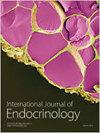Diabetes Mellitus across the Arabo-Islamic World: A Revolution
IF 2.3
4区 医学
Q3 ENDOCRINOLOGY & METABOLISM
引用次数: 0
Abstract
Background. Mankind continues to suffer from the ever-growing diabetes epidemic and the rapid rise of type 2 diabetes mellitus (T2DM). This metabolic disease has been studied since ancient civilizations. The Arabo-Islamic civilization excelled in establishing some of the most notable discoveries and teachings that remained the blueprint for years to come in the field of diabetology. Aim. This article aimed to review the ancient history of diabetes mellitus, with its main focus on the Arabo-Islamic civilization, and to report our subjective views and analysis of some of the past recommendations based on modern-day findings. Discussion. It is natural to have the teachings of medicine dynamically inspired by one civilization to another, as various fields continue to expand and evolve. This also applies to diabetology as the Arabo-Islamic world used the outlines of prior civilizations to revolutionize the understanding of the disease. Al-Razi and Ibn Sina are probably two of the most renowned polymaths in history, and their contributions to diabetology are well documented. Ibn Maymun’s postulation about the higher prevalence of diabetes in Egypt as compared to Andalusia is something to be carefully studied. It could be that diabetes mellitus’ underdiagnosis and late-stage detection are some of the major reasons for the disparity between the two mentioned regions. Modern-day Arabo-Islamic scholars continue to excel in revolutionizing diabetology. Conclusion. The Arabo-Islamic world houses an impressive bout of scholars who have contributed since the ancient times to diabetology. This scientific locomotion shows no signs of stopping, as it continues to shine during the present day, and likely in the future.阿拉伯-伊斯兰世界的糖尿病:一场革命
背景。人类继续遭受日益增长的糖尿病流行和快速上升的2型糖尿病(T2DM)。这种代谢性疾病从古代文明就开始研究了。阿拉伯-伊斯兰文明在建立一些最著名的发现和教义方面表现出色,这些发现和教义在未来几年仍然是糖尿病学领域的蓝图。的目标。本文旨在回顾糖尿病的古代历史,主要关注阿拉伯-伊斯兰文明,并根据现代发现报告我们对过去一些建议的主观看法和分析。讨论。随着各个领域的不断扩展和发展,医学教学自然会受到一种文明对另一种文明的动态启发。这也适用于糖尿病学,因为阿拉伯-伊斯兰世界利用先前文明的轮廓来彻底改变对这种疾病的理解。Al-Razi和Ibn Sina可能是历史上最著名的博学者,他们对糖尿病学的贡献有据可查。伊本·梅蒙(Ibn Maymun)关于埃及糖尿病患病率高于安达卢西亚的假设值得仔细研究。可能糖尿病的未确诊和晚期发现是导致上述两个地区差异的一些主要原因。现代阿拉伯-伊斯兰学者在糖尿病学的革命中继续表现出色。结论。阿拉伯-伊斯兰世界拥有一批令人印象深刻的学者,他们自古以来就对糖尿病学做出了贡献。这种科学运动没有停止的迹象,因为它在今天继续闪耀,而且很可能在未来。
本文章由计算机程序翻译,如有差异,请以英文原文为准。
求助全文
约1分钟内获得全文
求助全文
来源期刊

International Journal of Endocrinology
ENDOCRINOLOGY & METABOLISM-
CiteScore
5.20
自引率
0.00%
发文量
147
审稿时长
1 months
期刊介绍:
International Journal of Endocrinology is a peer-reviewed, Open Access journal that provides a forum for scientists and clinicians working in basic and translational research. The journal publishes original research articles, review articles, and clinical studies that provide insights into the endocrine system and its associated diseases at a genomic, molecular, biochemical and cellular level.
 求助内容:
求助内容: 应助结果提醒方式:
应助结果提醒方式:


